Restore on-demand
Restore from virtual environment menu
To restore a single virtual machine on-demand, go to the instances tab under the Virtual Environment section. Click on the restore icon next to the virtual machine ![]()
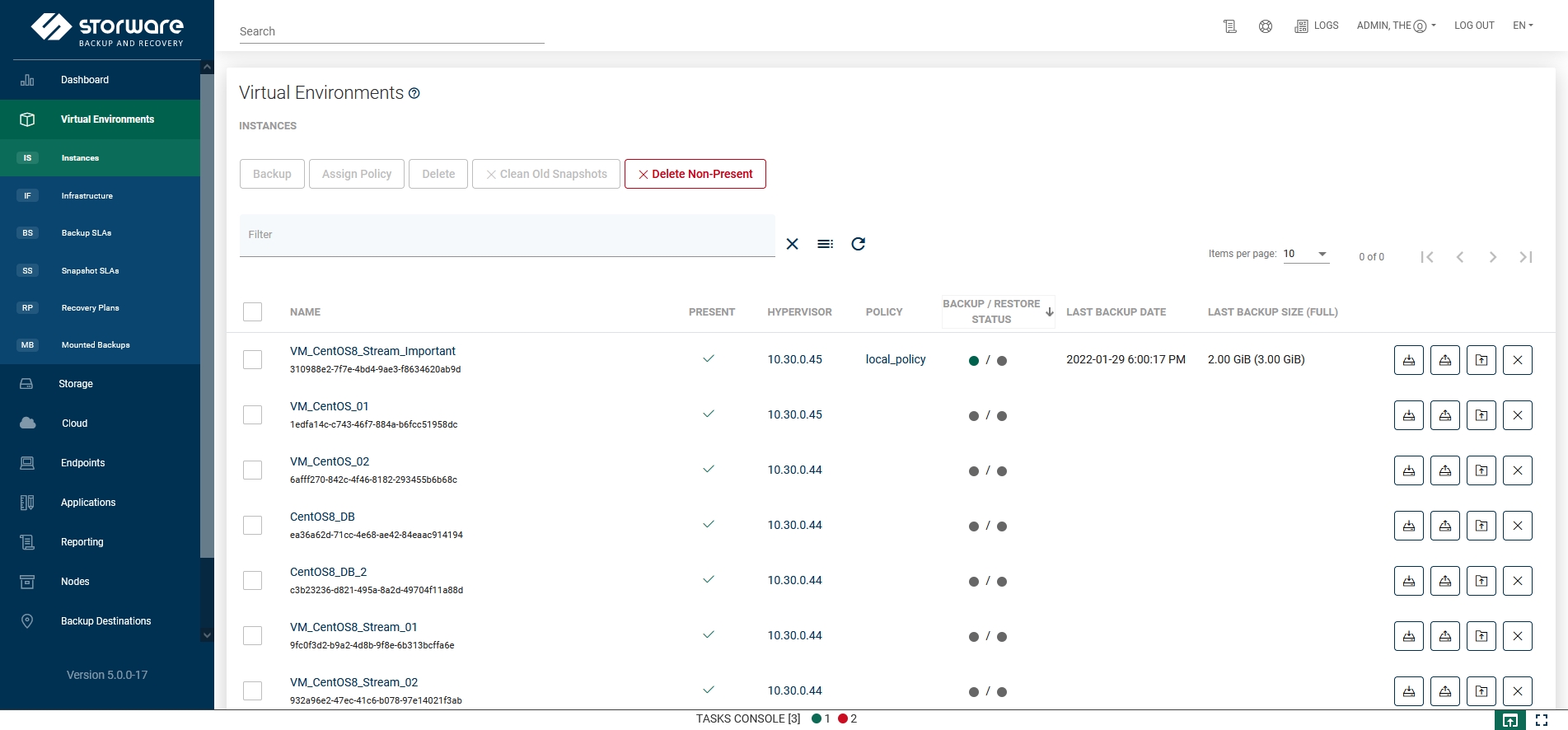
Now you should see a popup window where you might customize restore settings.
Restoring to the filesystem is an option to restore VMs directly to the Storware Backup & Recovery node storage. (Remember, the Storware Backup & Recovery user must have the appropriate write permissions to the given path.)
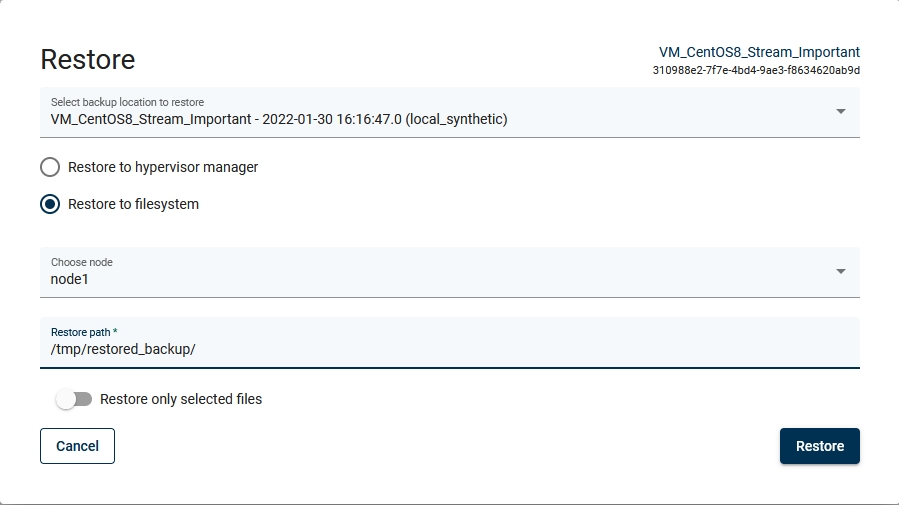
Restoring to a hypervisor or hypervisor manager is allowed for several providers, but not for all (for detailed info go to Storware Backup & Recovery Support Matrix).
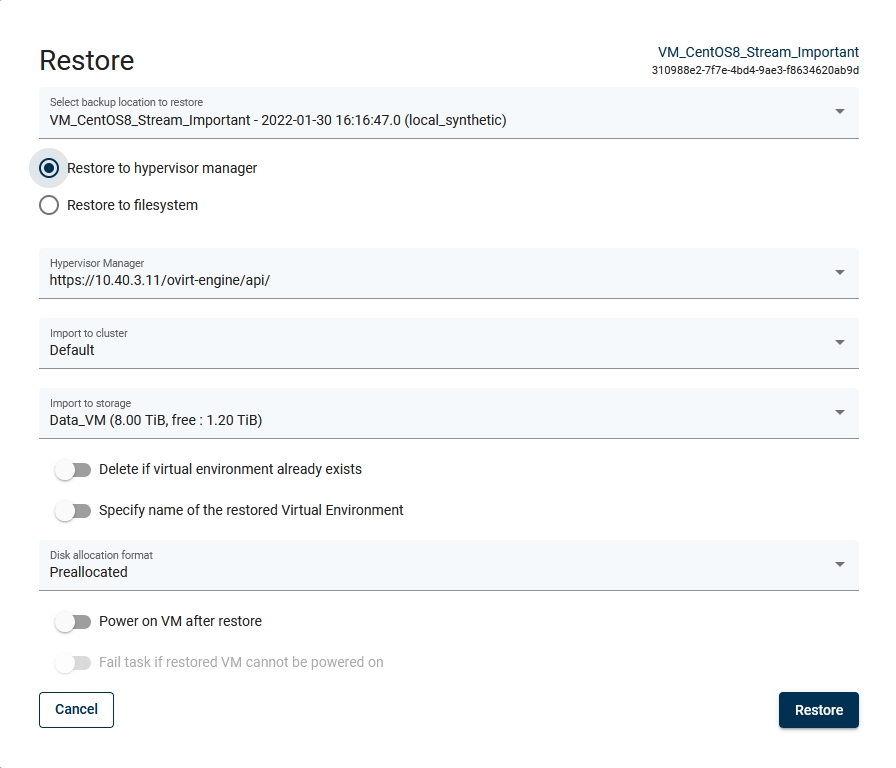
When you restore a virtual machine, disks of this machine can be:
Restored to specified destination. It can be the same or diffrent datastore/volume type for each disk.
Restored with changed disk name
Supported platforms: RHV, VMware ESXi, Openstack, Citrix, Hyper-V, Nutanix AHV.
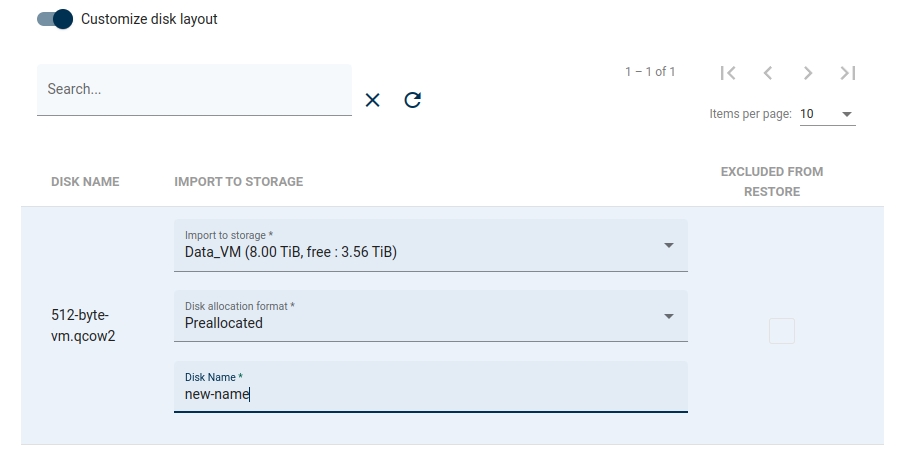
Finally, after customizing the restore, click the restore button.
Restore on-demand using recovery plans
To restore several virtual machines, you have to use recovery plans. As you can see on the below screenshot, next to the recovery plan policy you can find the same icon that allows you to restore virtual machines ![]()

After clicking on it you will see a summary window showing what will be restored.
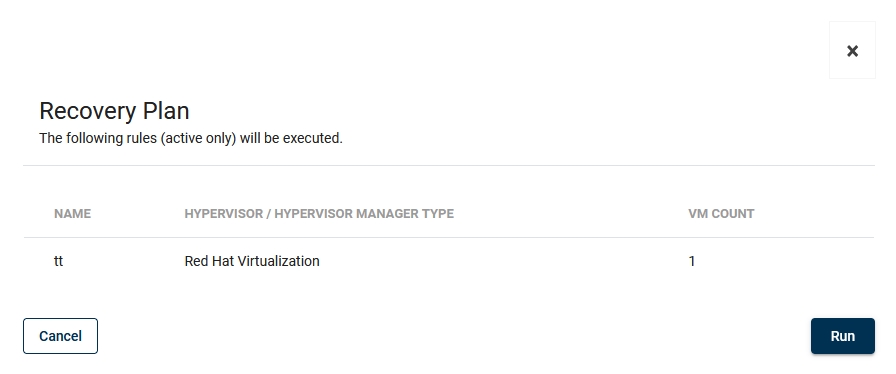
Click Run to start the restore process.